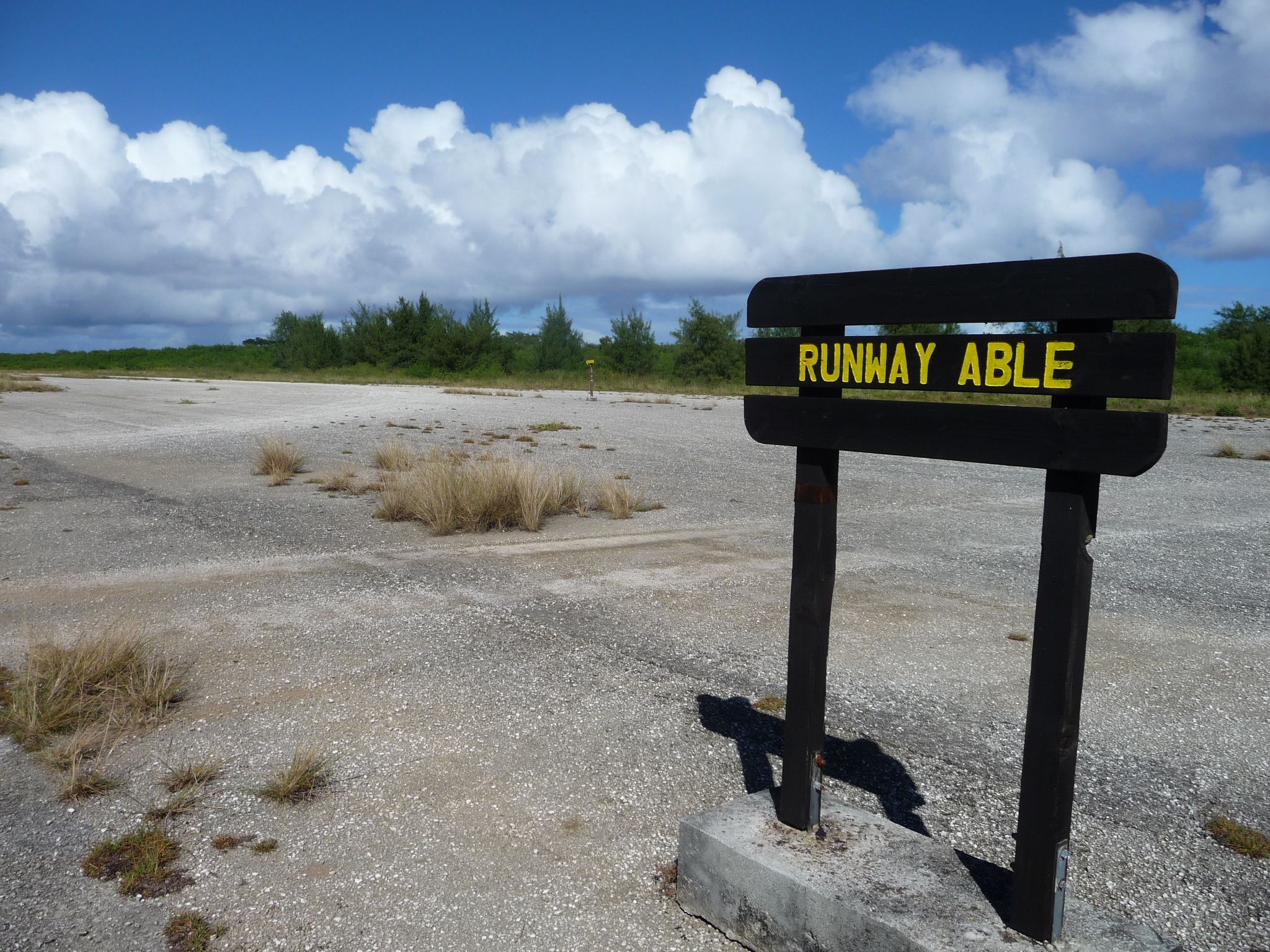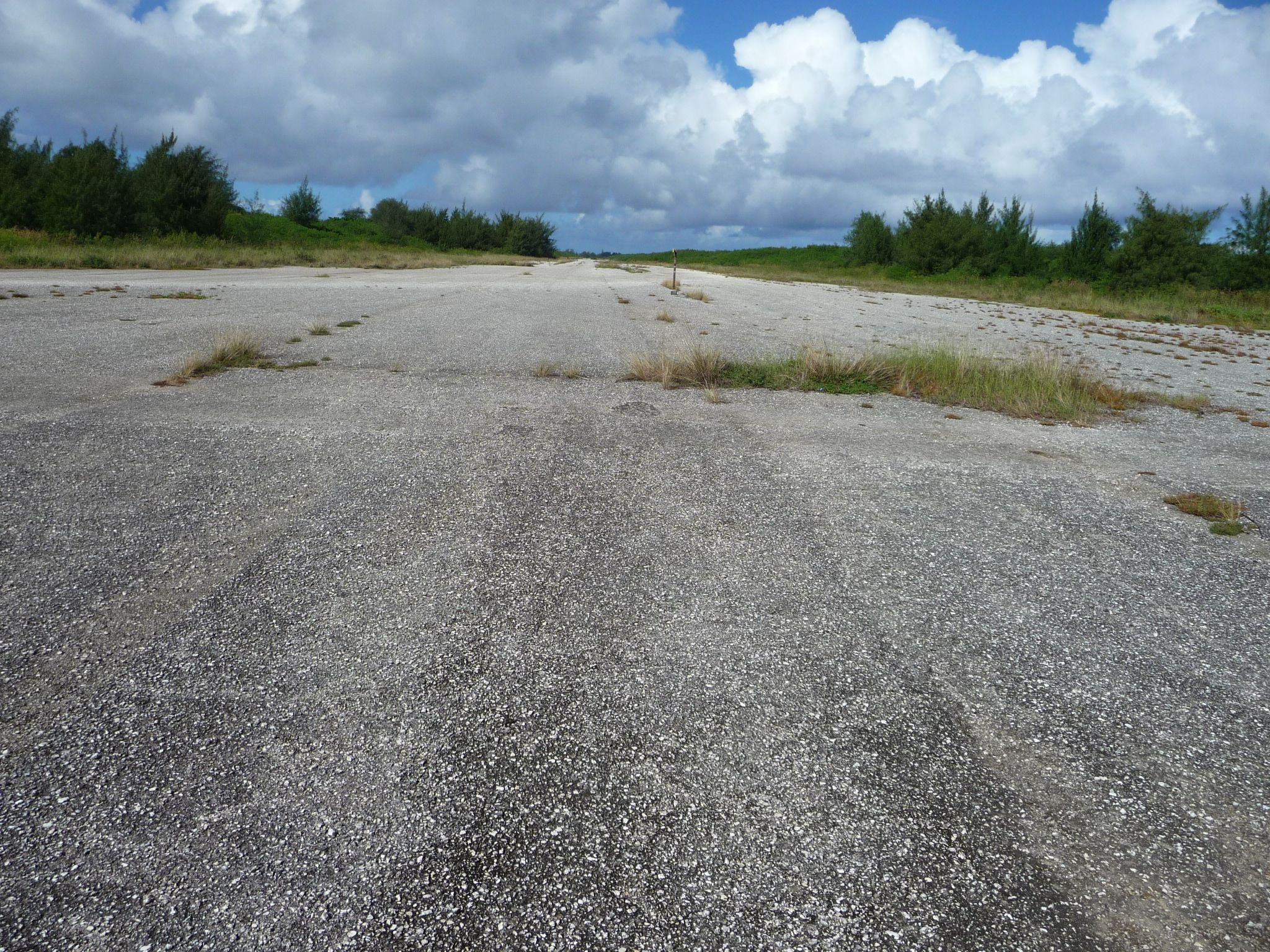Historic Wendover Airfield - WWII
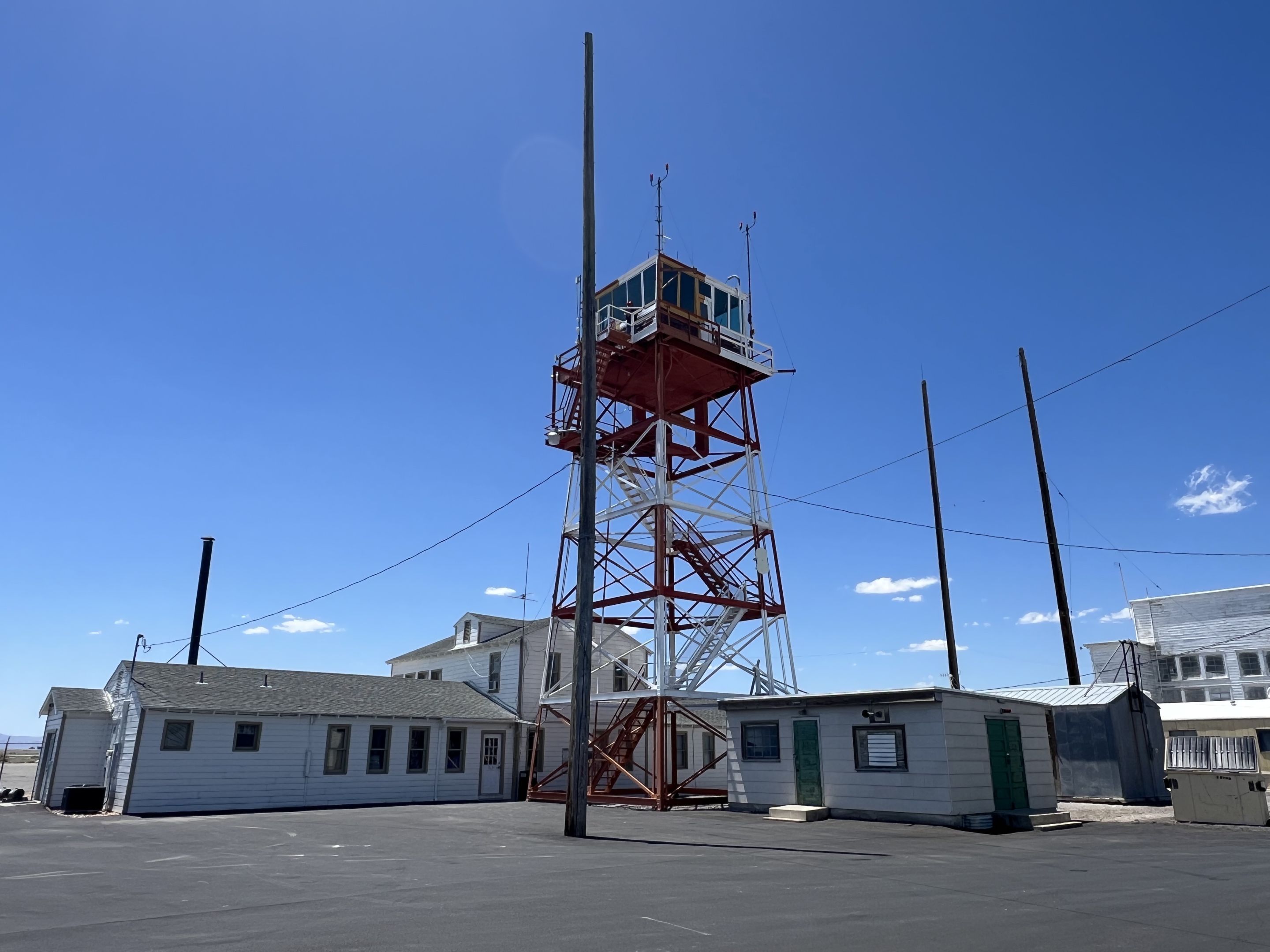
We visited the Historic Wendover Airfield in Wendover, Utah, as part of our Manhattan Project Quest. The Army Air Base was used as a major training facility during WWII for the Army's heavy bombers to train before deployment to the European or Pacific theaters. Notable units such as the "First Over Germany" and the "Bloody Hundredth" trained here. The Airfield produced some of the best bombers and fighter pilots of the war.
The Airfield is the most original and complete remaining Army Air Force training base in the country, and you can visit and see a good share of it. As you approach the museum, you see the original control tower and its accompanying buildings. It has an okay museum, where you can see a replica bomb, signed by many of the pilots and crew members who came through here. As you can see in the close-up photo of the signatures, Paul Tibbets, the pilot of the Enola Gay, signed the bomb. They also had this odd assortment of helmets from various wars, and from different countries.

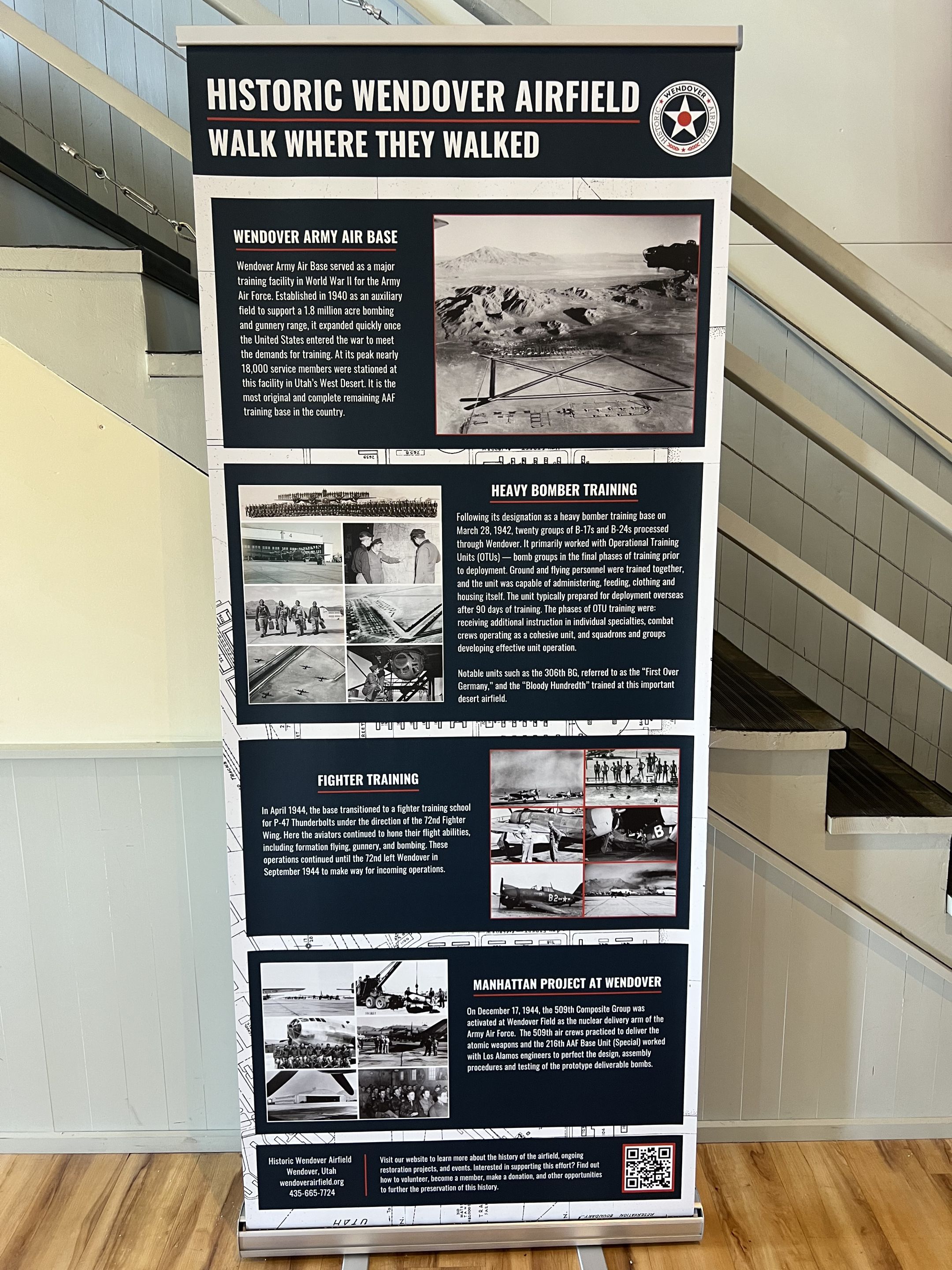
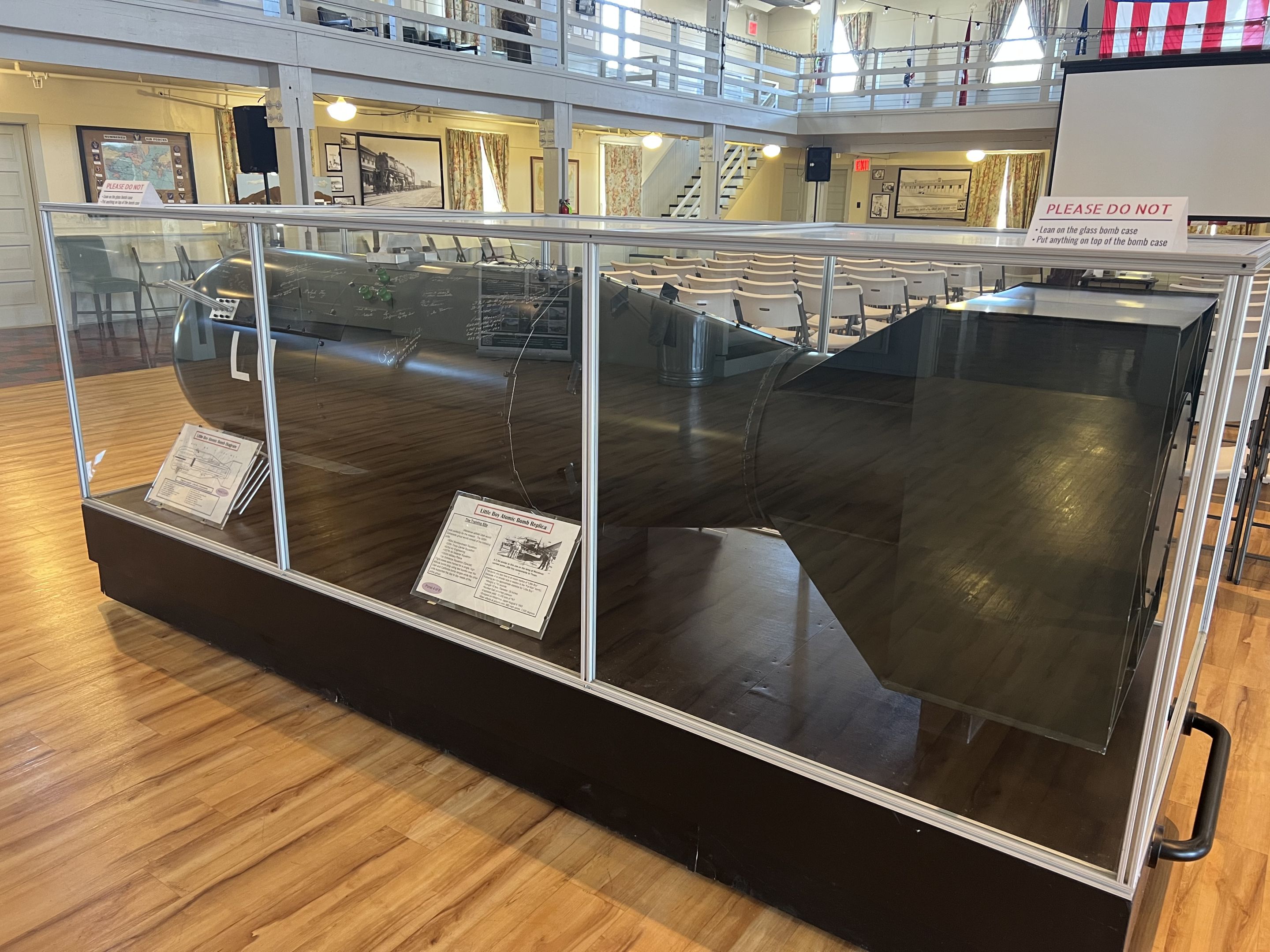
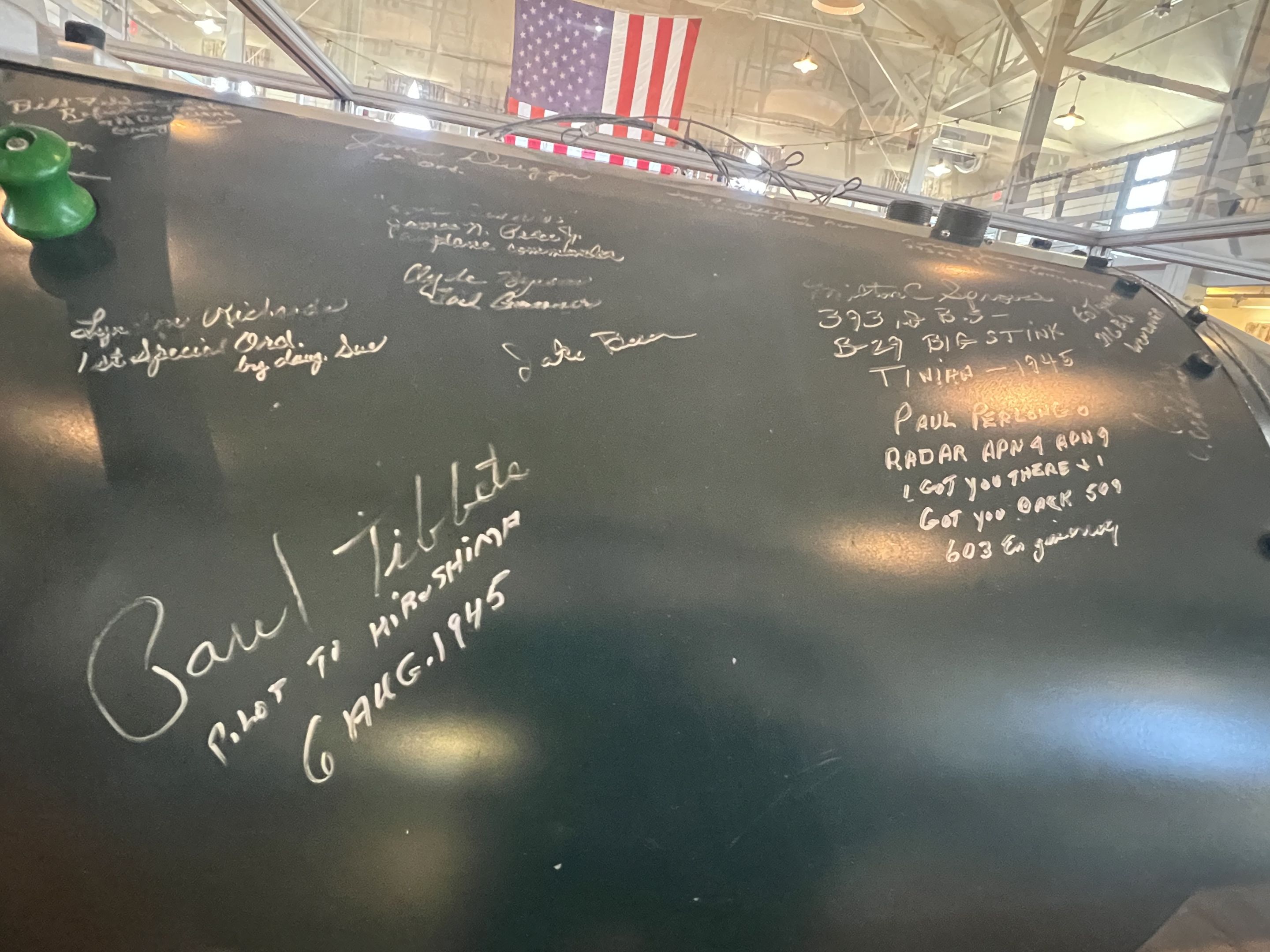
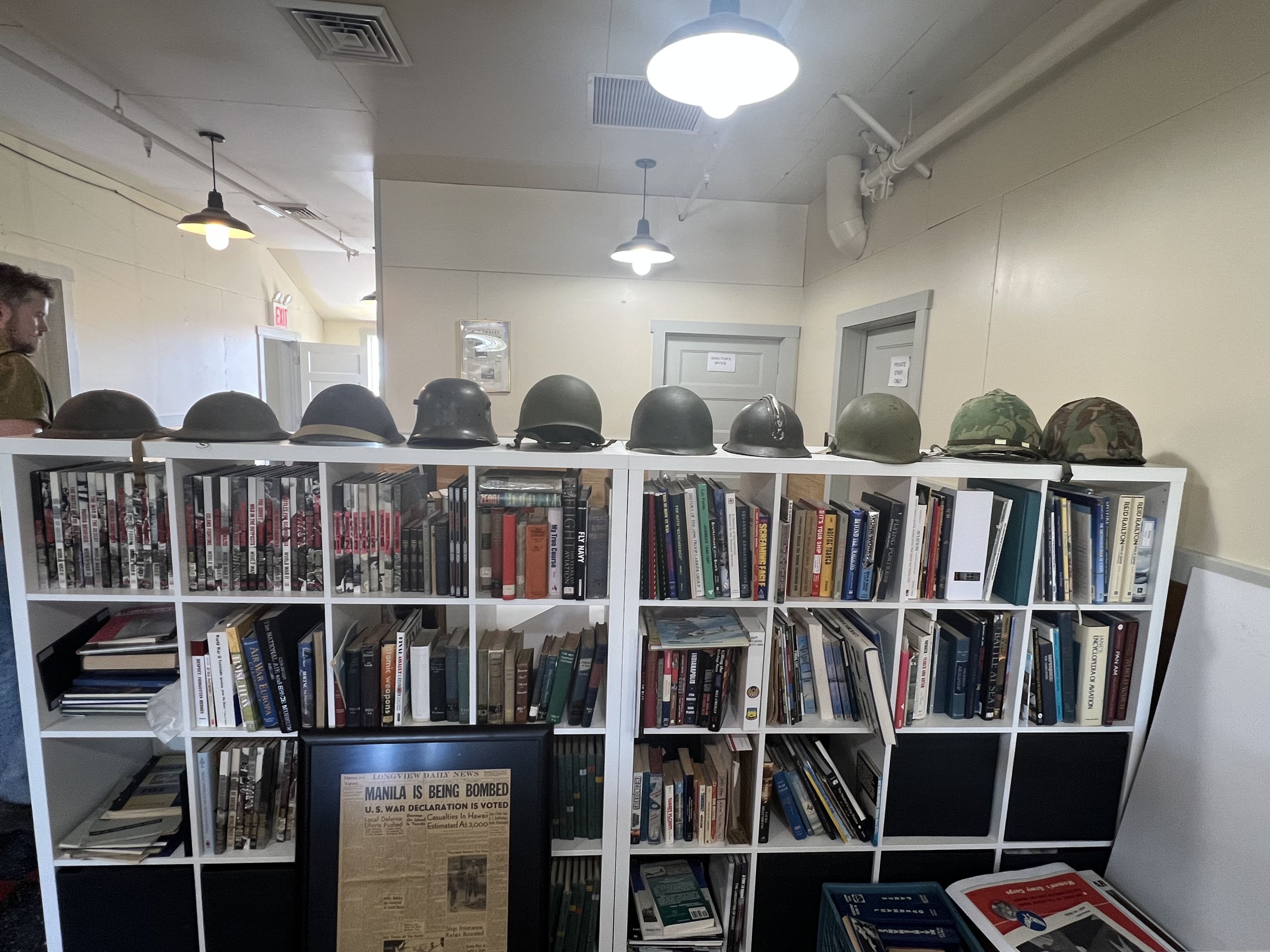
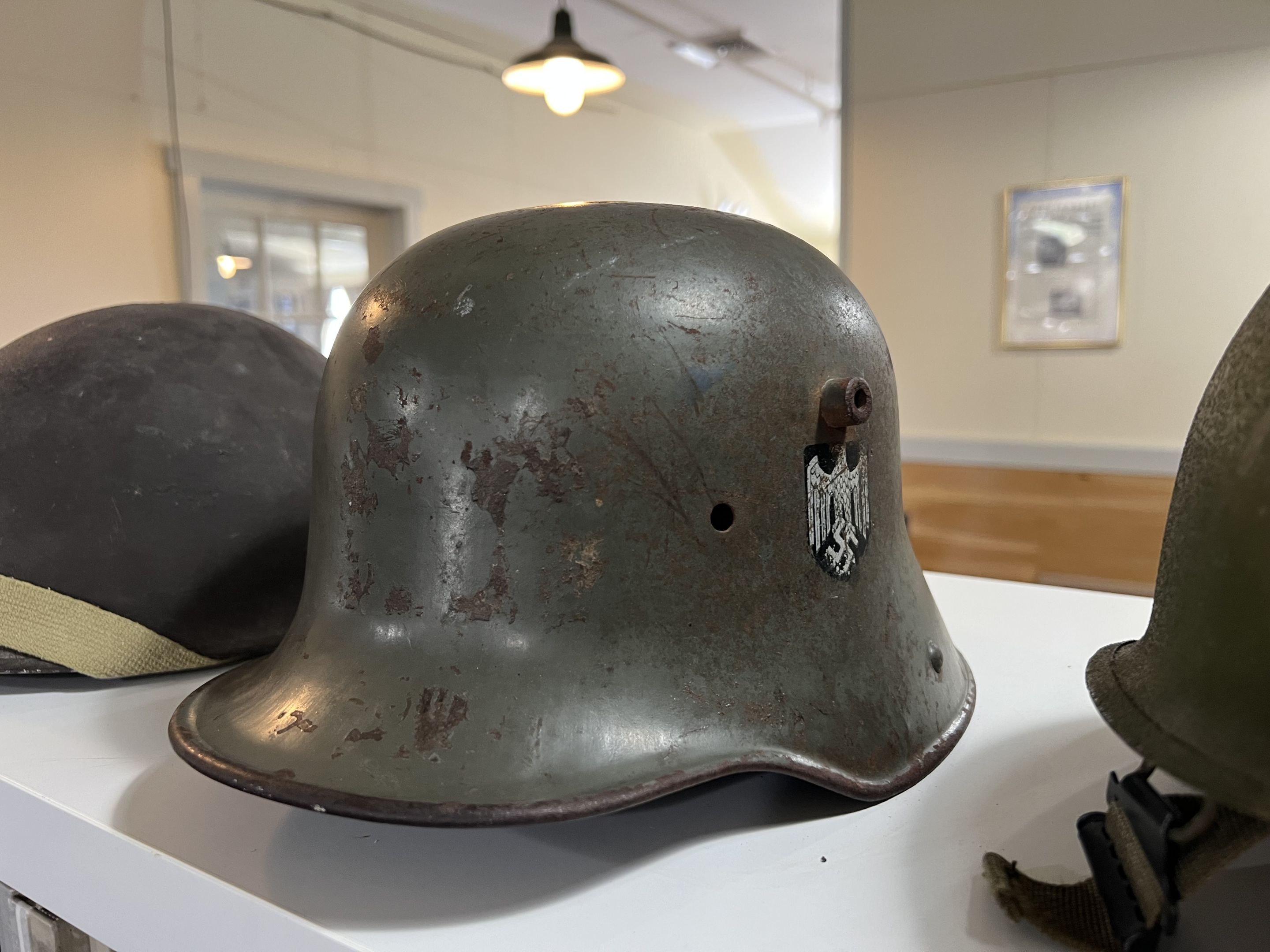
But the absolute best part of visiting is the tour they give at 1:30 p.m. everyday where you are able to go beyond the fences and visit many of the remaining buildings. It is an extra fee, but it is worth the money. The website says to plan on an hour, but we were there for over 2 hours...and it was absolutely worth it. It was the highlight of the entire trip for me.

At the beginning of the tour, the tour guide gives each participant a "job" (e.g., you're the pilot, you're the navigator, bombardier, gunner, etc.). Then throughout the tour, the guide refers to each person as he discusses their job, even having each person verbally follow their job's protocol (e.g., saying "you have control," and "bombs away", etc.). It was a great way to have participants become more interested and invested in learning the history of the Airbase.
The first part of the tour brings you to the first several standing buildings. These large buildings had various uses during the war. The first two were used to do repairs on the various aircraft. We were able to go into one of the large buildings. The wood comprising the ceiling is all original! (The second building was used in the filming of Independence Day and served as "Area 51" - the sign is from the moving filming.)
As you can see, the front of the buildings, which face the runways and the open desert, are full of windows to let the light in. However, as you can see in the interior windows, the backside of the buildings have no windows or the windows are very high up. This side of the buildings faced the mountains behind the base, and were designed that way so that spies could not use binoculars to see inside the buildings and gather valuable intelligence.
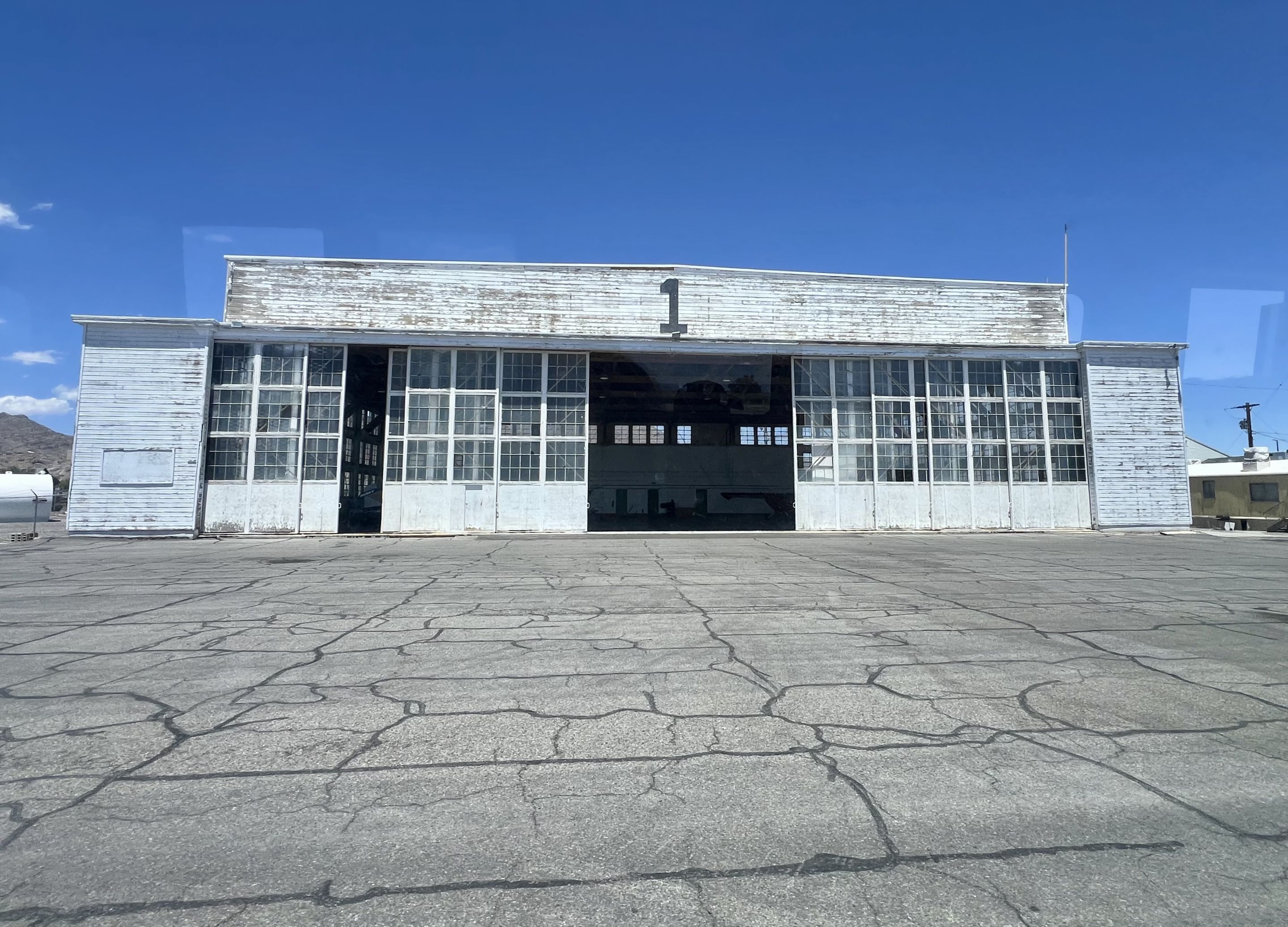
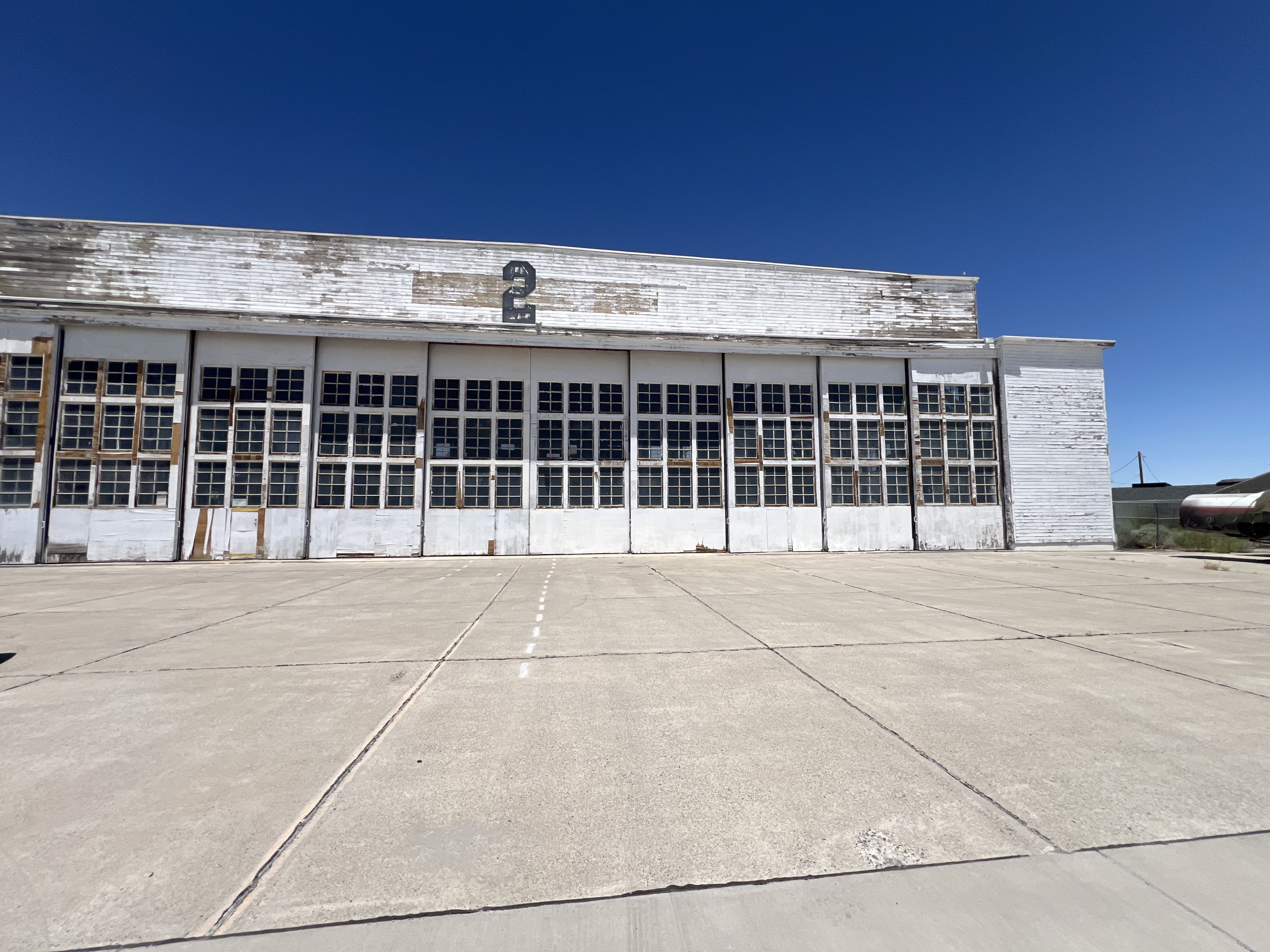

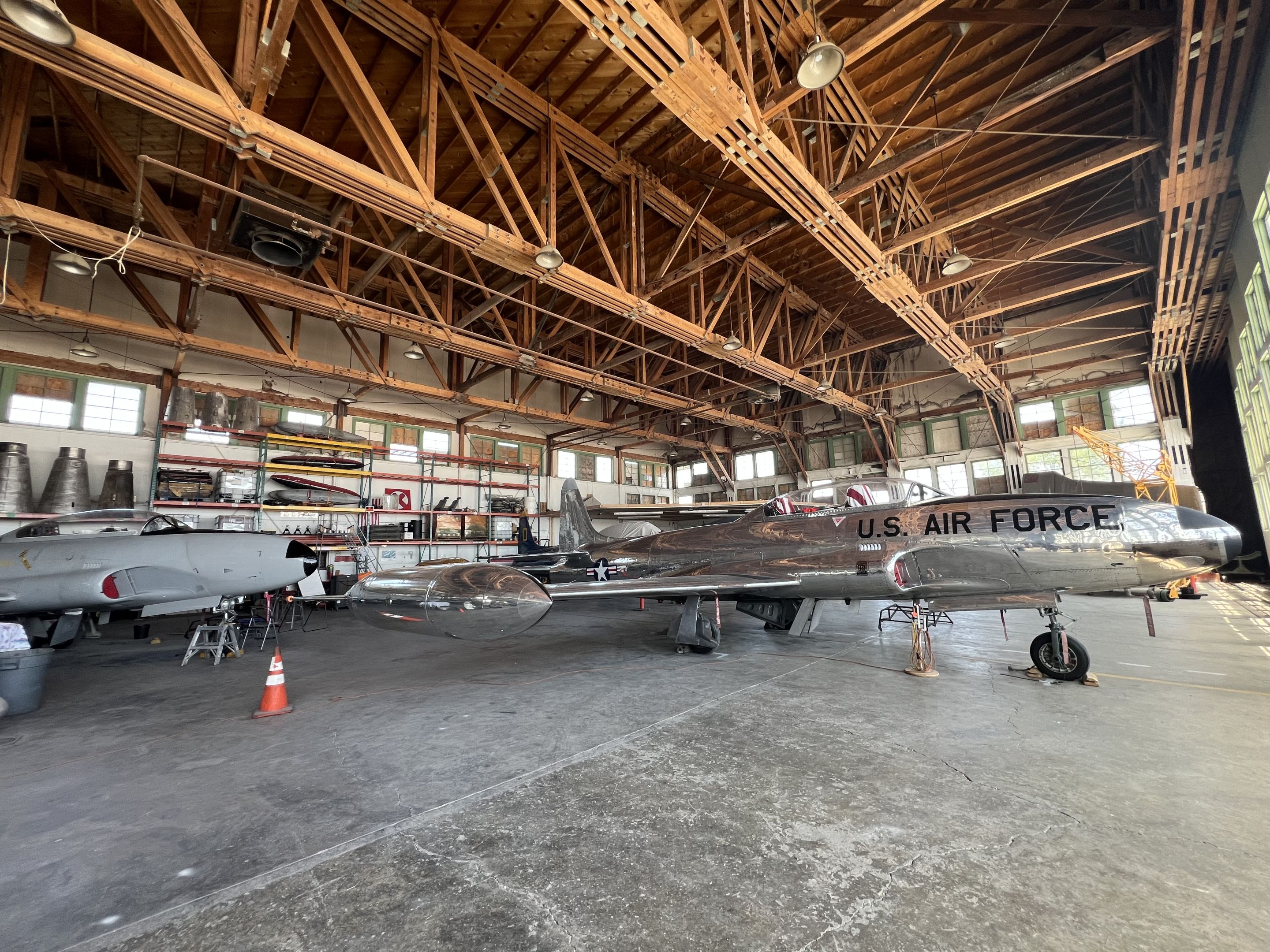
As you continue down, you are able to go into the building where the navigators and bombardiers trained outside of the aircraft. The bombardiers used the Norden Bombsight to accurately bomb from high altitudes. These bombsights were highly classified, so much so that bombardiers wore sidearms and had blanket authority to shoot anyone who might try to take away the bombsight from them--even on the Airbase itself. The bombsights were kept in specialized safes and had strict protocol for checking them in and out each day.
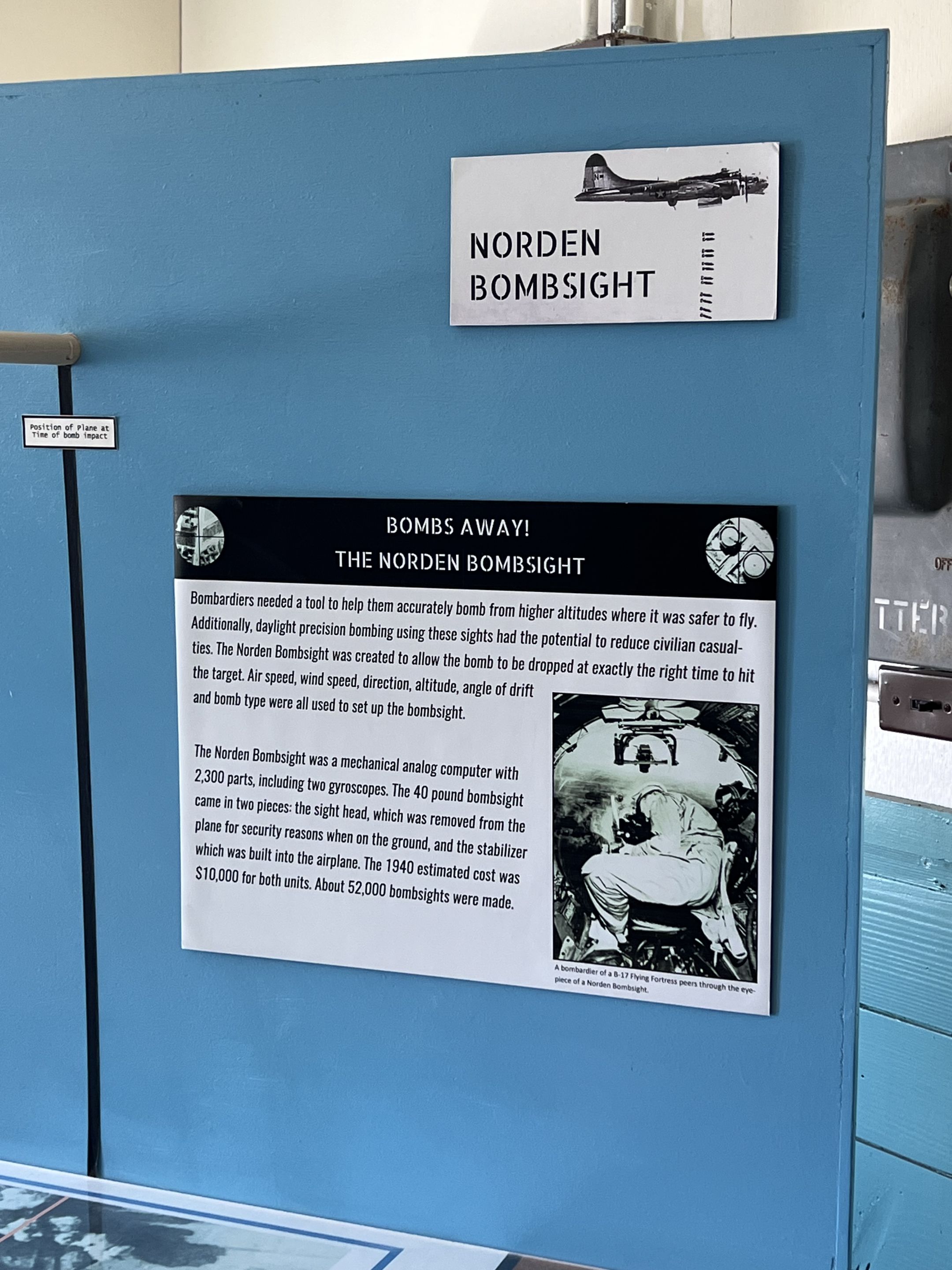
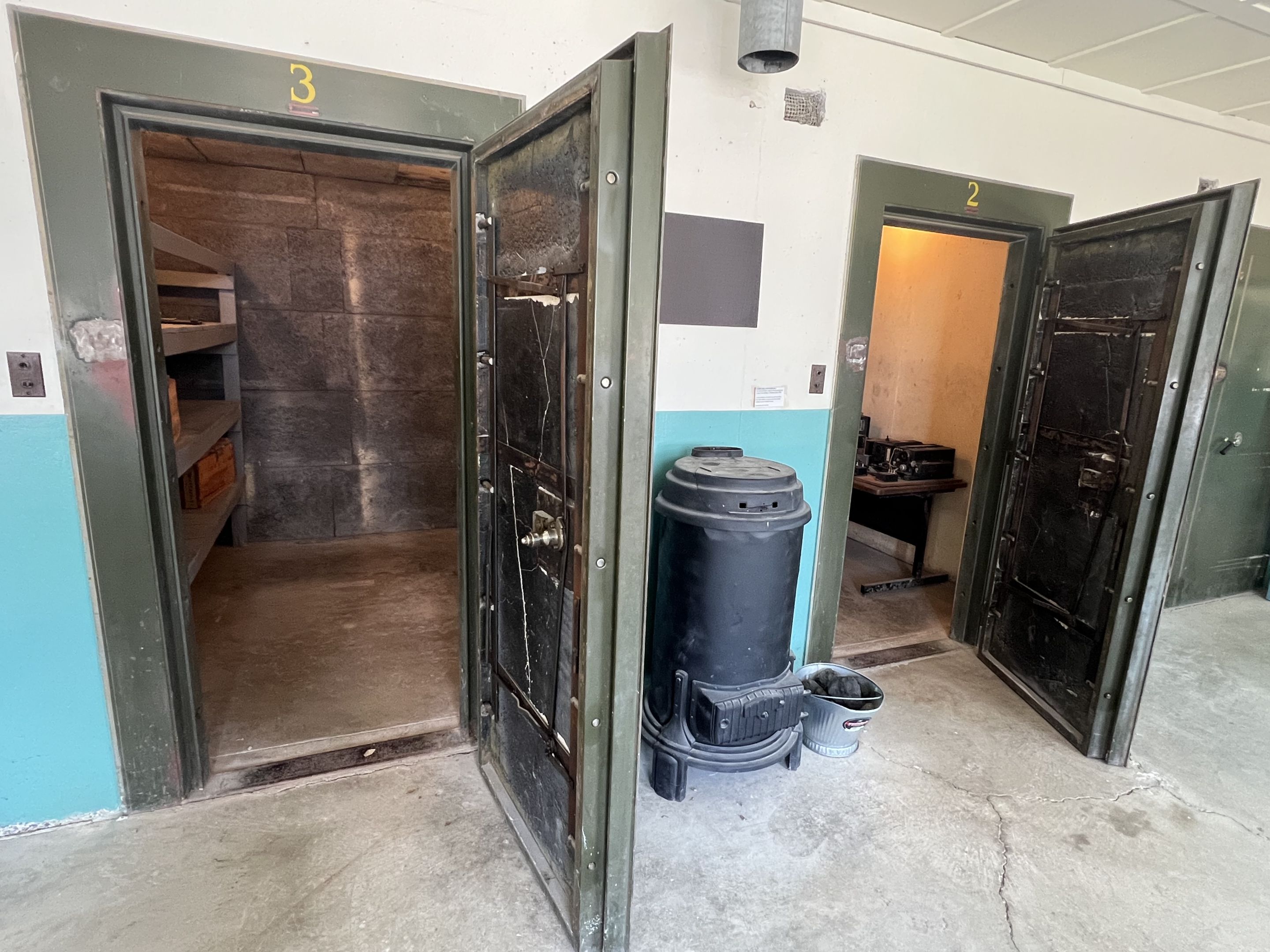
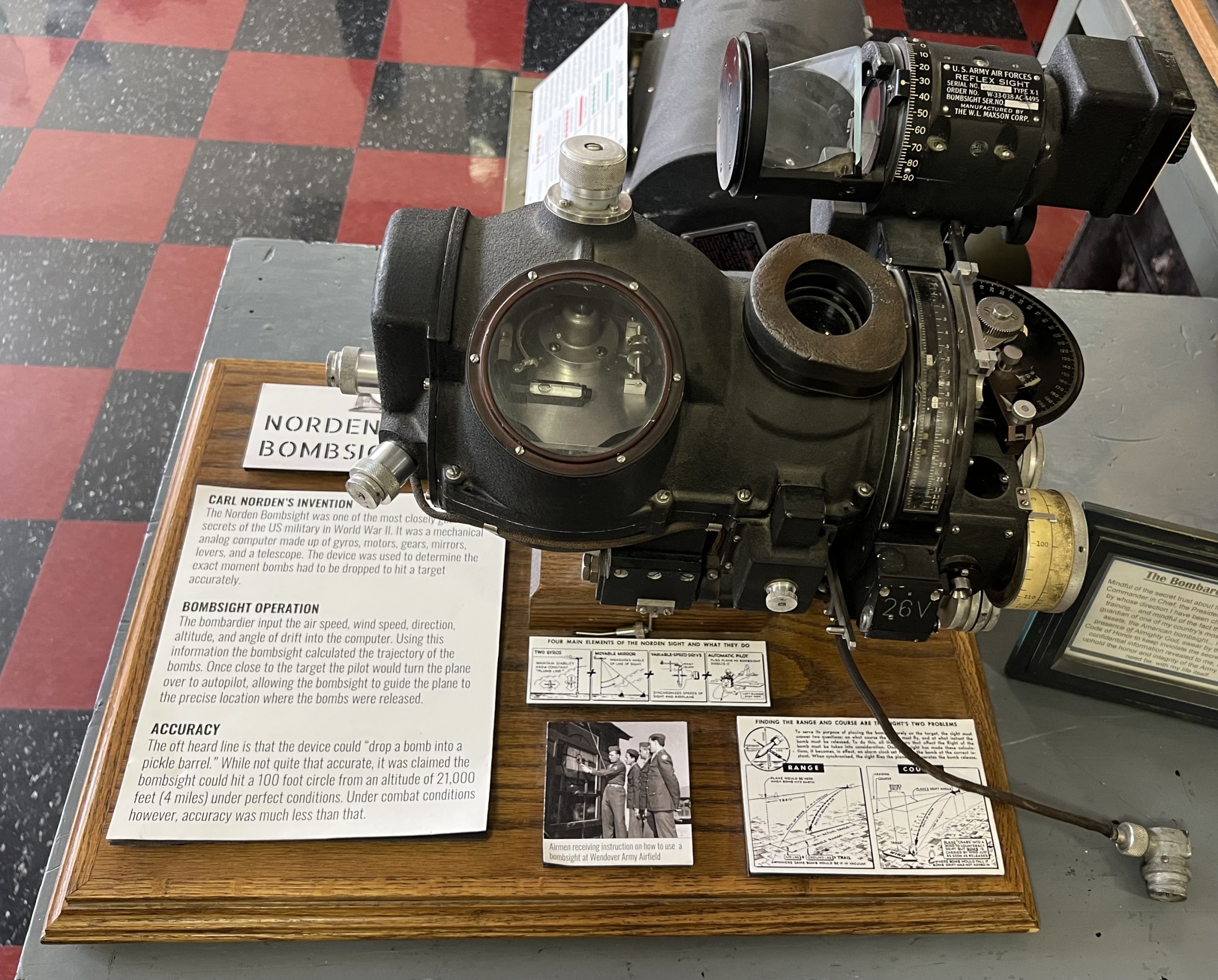
But, the best part of the tour, and the reason why we visited this as part of our Manhattan Project Quest, was that this is where the crew for the Enola Gay trained to bomb Japan with the nuclear weapon. In December 1944, almost the entire airbase was emptied (approximately 18,000 people), and the 509th Composite Group (the nuclear delivery arm of the Army Air Force), led by Paul Tibbets, arrived to begin training. The crews of the 509th worked with the scientists and engineers in Los Alamos to test various methods of nuclear bomb delivery.


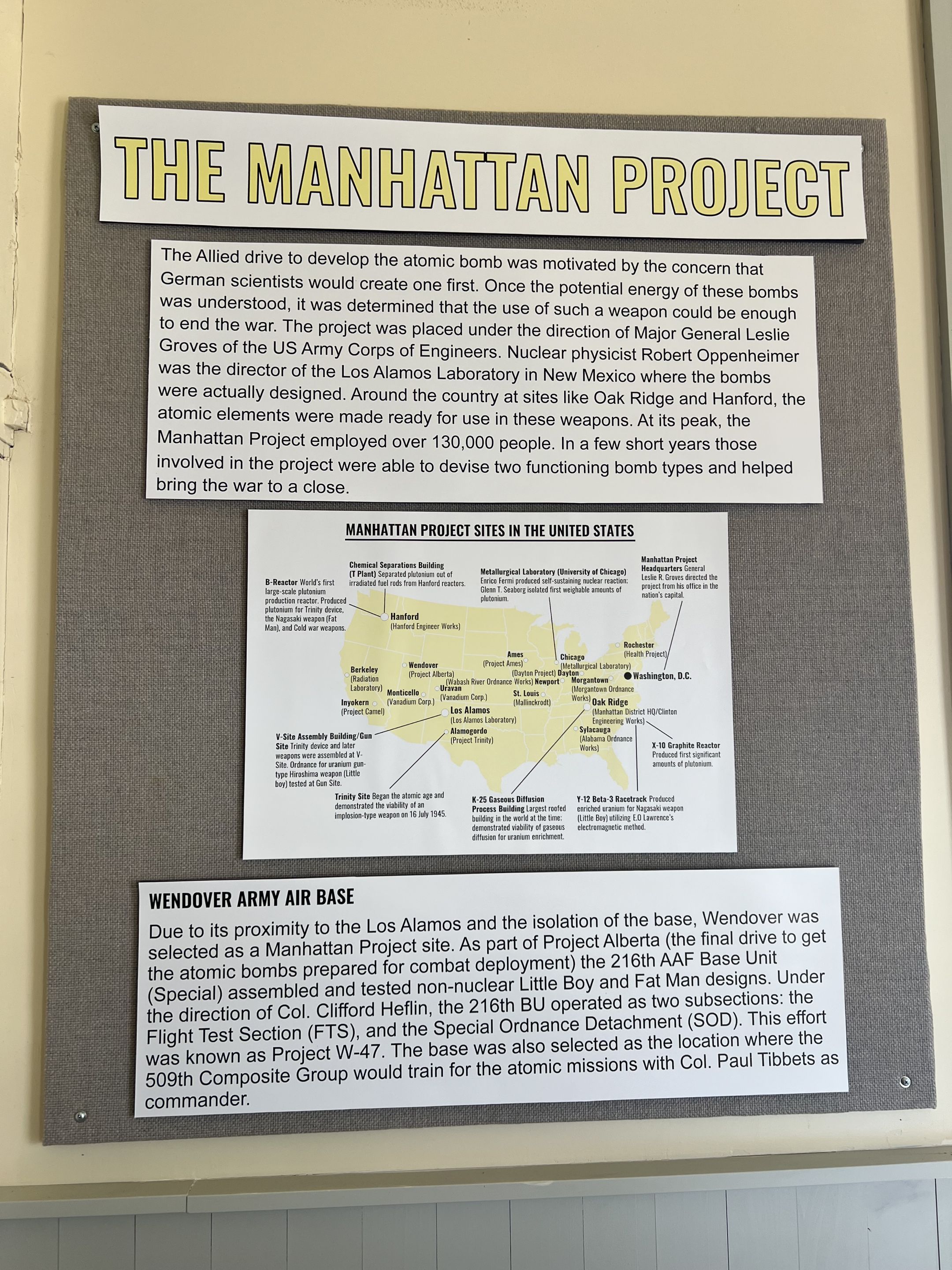
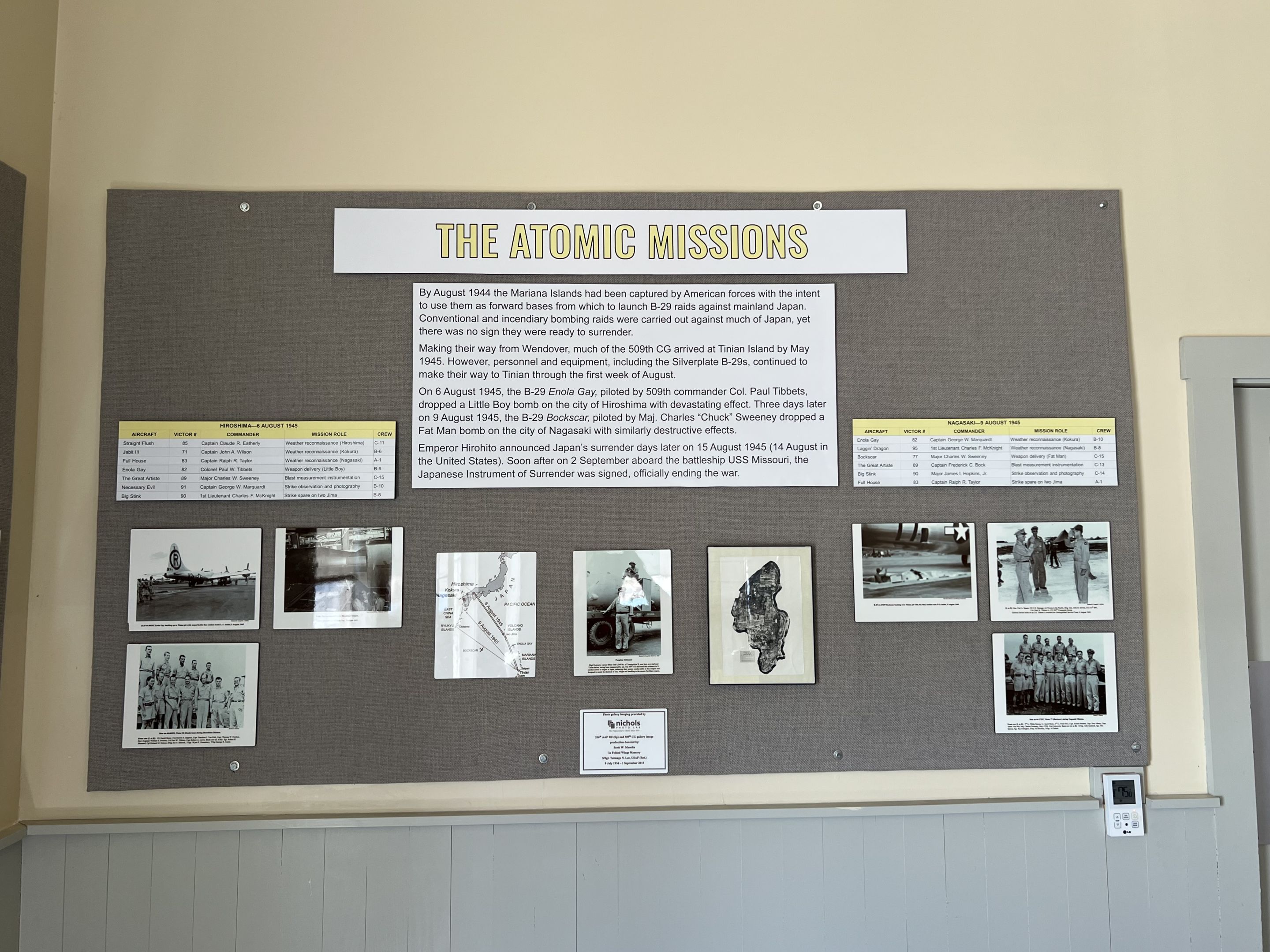
The final building we toured was the giant building where the Enola Gay was stored when the crew was not out on training runs. The building is gigantic. Notice at the top of the doors, there is an additional notch cut out so that the plane's tail could make it inside. Due to its extreme sensitivity and the classified mission itself, there are no windows in this building where anyone can see inside.

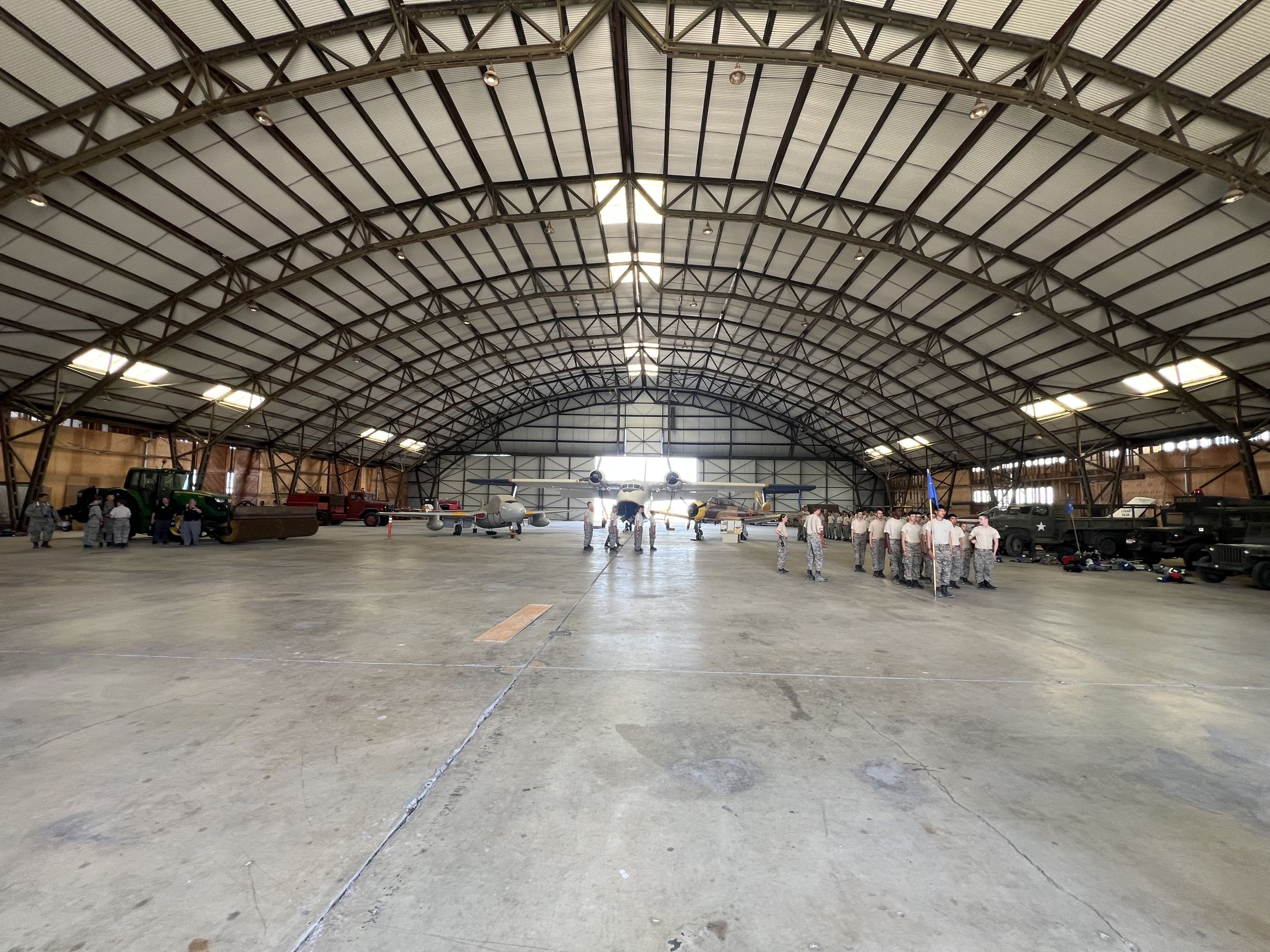
Finally, we were able to go out and see the bomb-loading pit where the training bombs were loaded into the Enola Gay. The training bomb would be moved into the pit with cranes, then the plane was positioned over them and the bomb was then hoisted up into the plane.
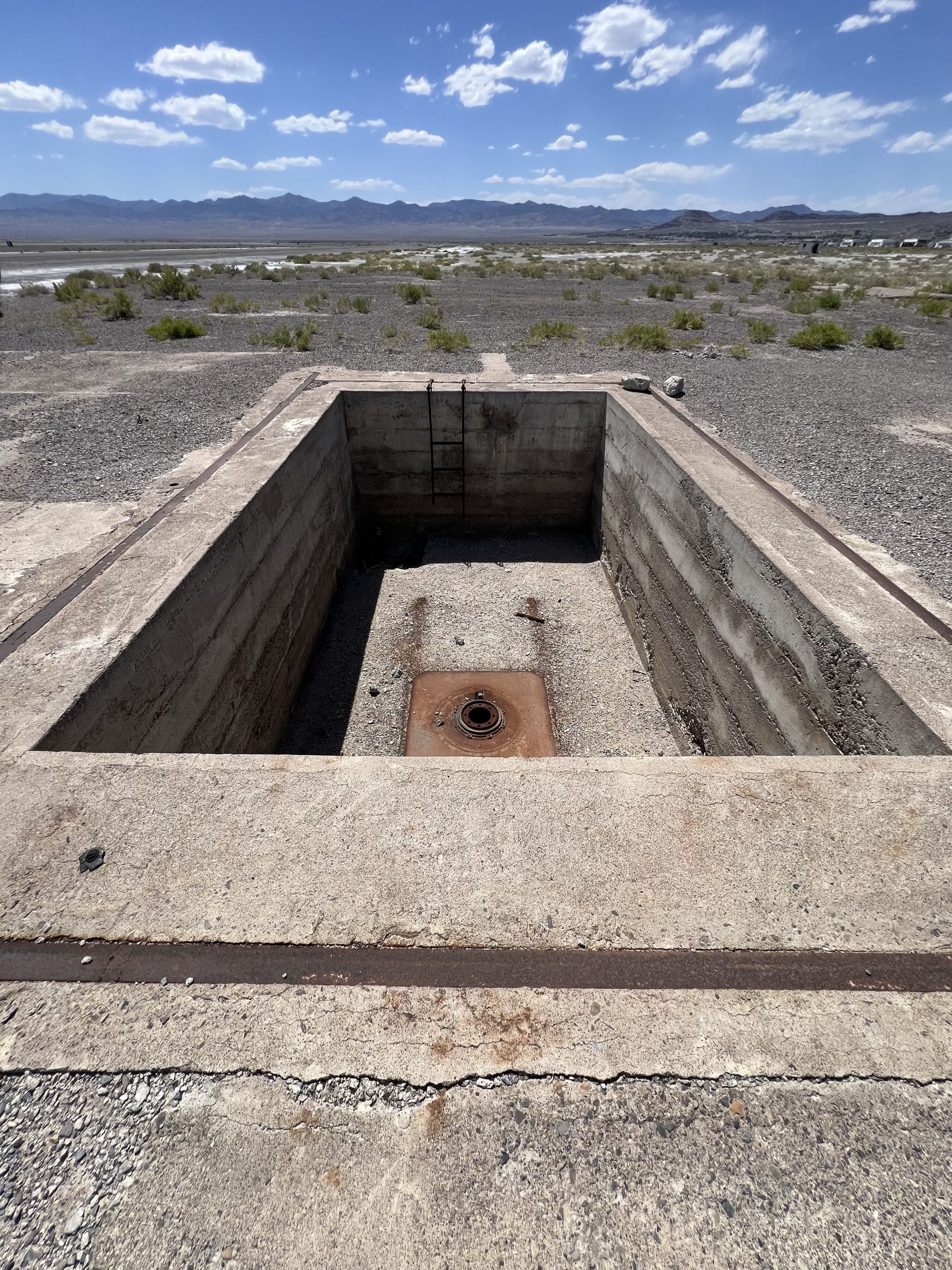
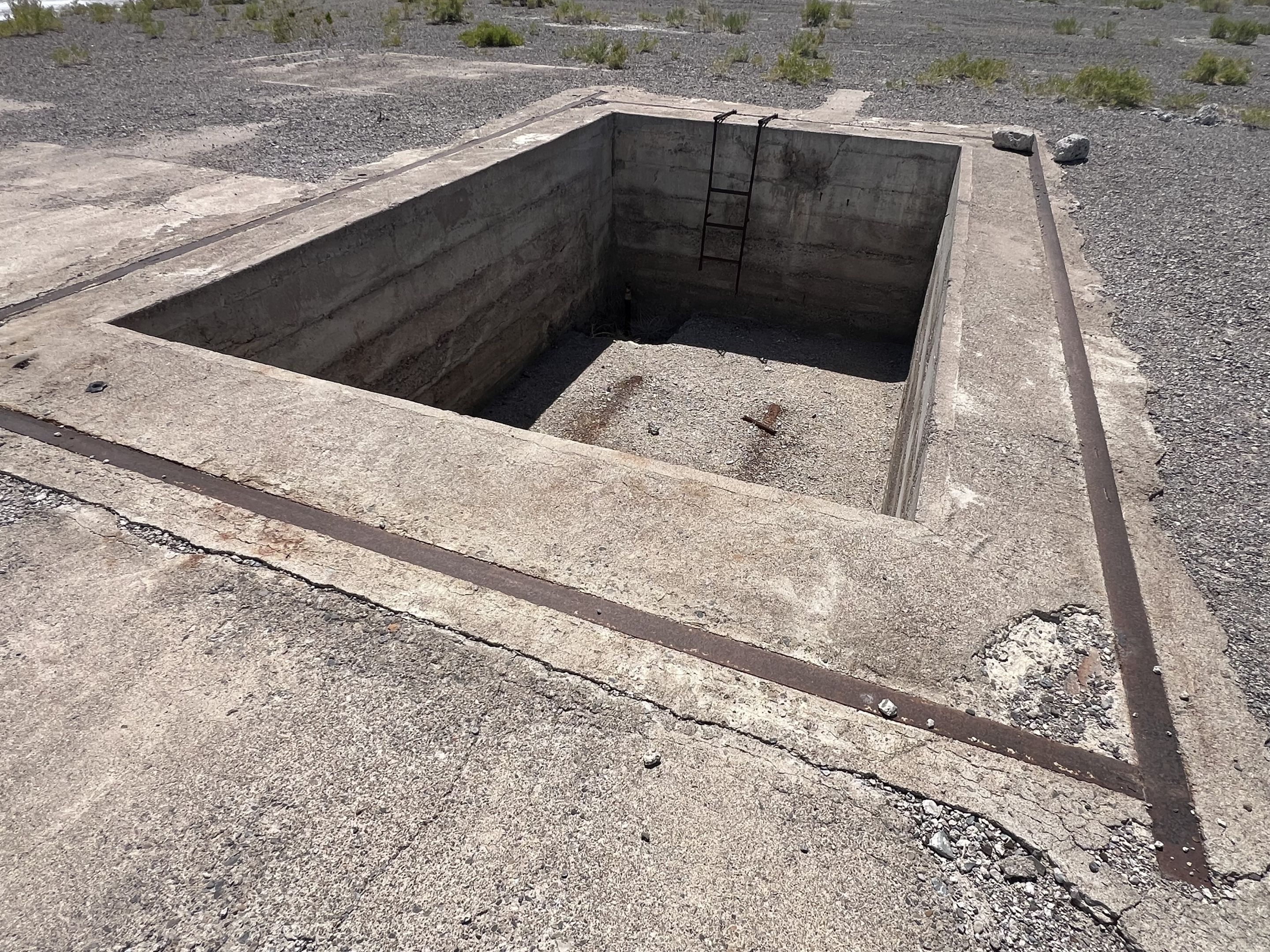
Then the plane moved to the runway just beyond this pit, where it takes off and goes on its training mission.
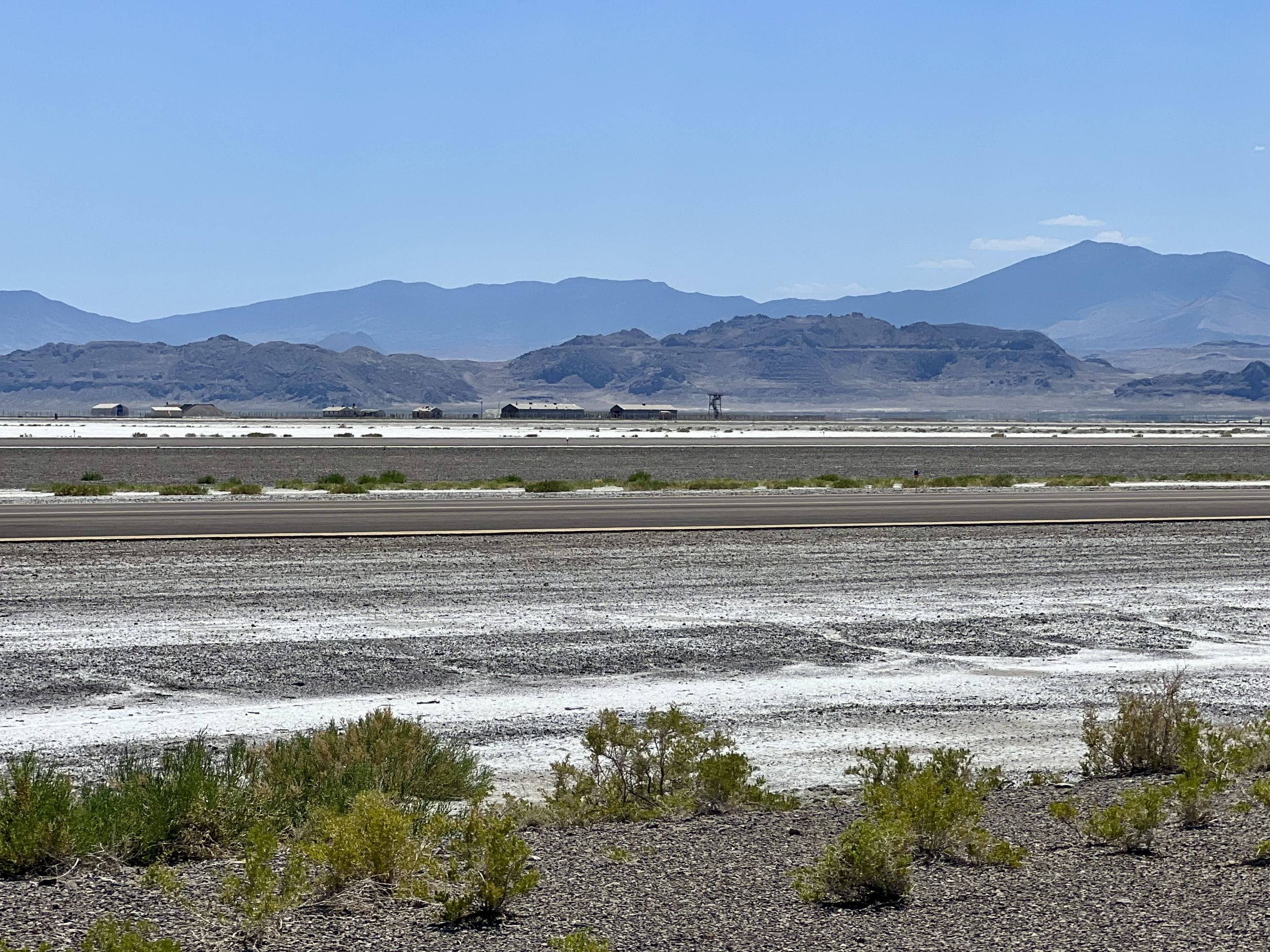
One can visit the actual Enola Gay in the Smithsonian's Air and Space Museum at the Steven F. Udvar-Hazy Center outside Washington, D.C.
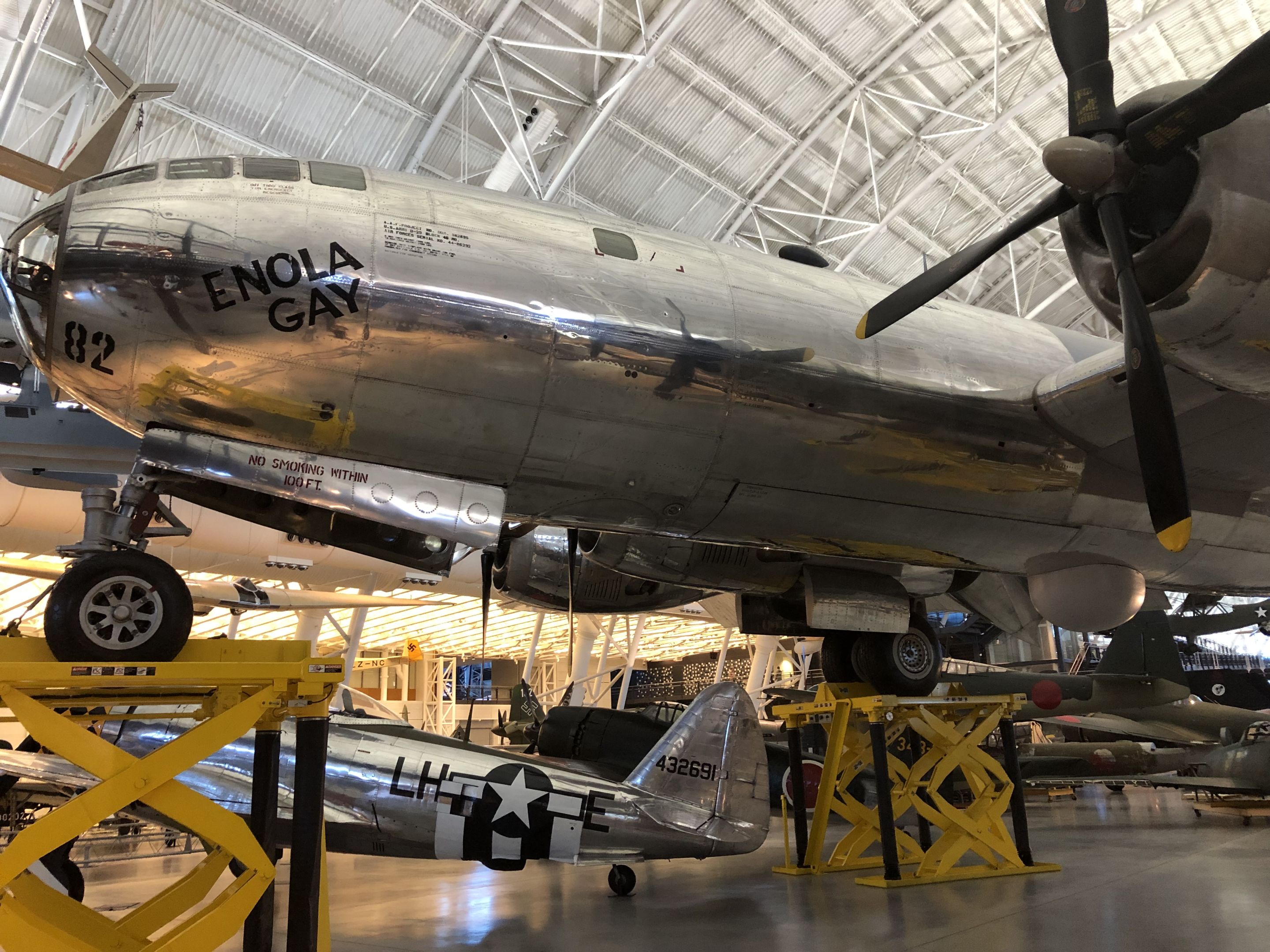
Scott and I were fortunate enough to have visited Tinian Island in the Northern Mariana Islands in November 2017. Among other things, we were able to see the bomb pits where the actual nuclear bombs were loaded onto the Enola Gay and Bockscar.
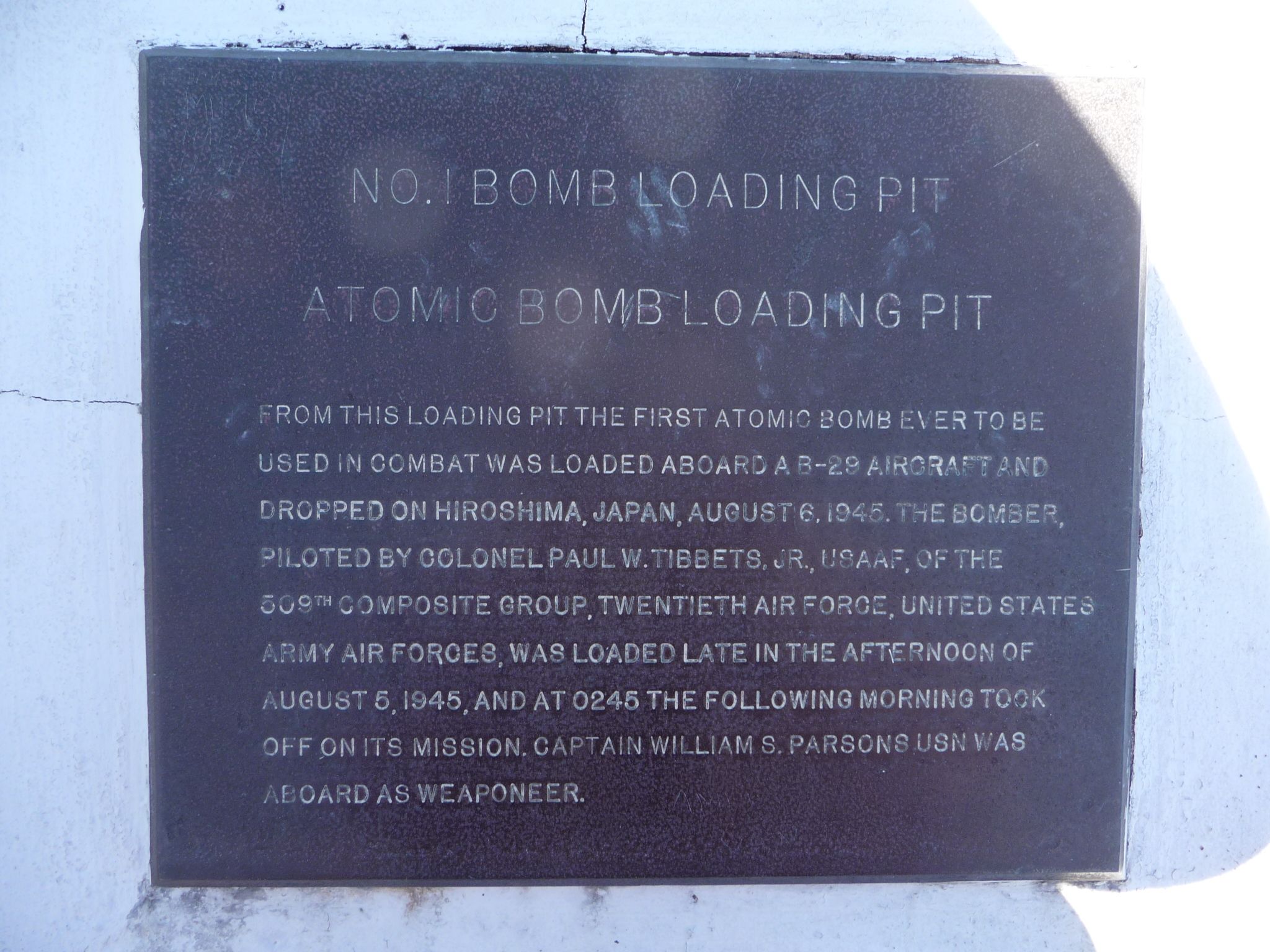

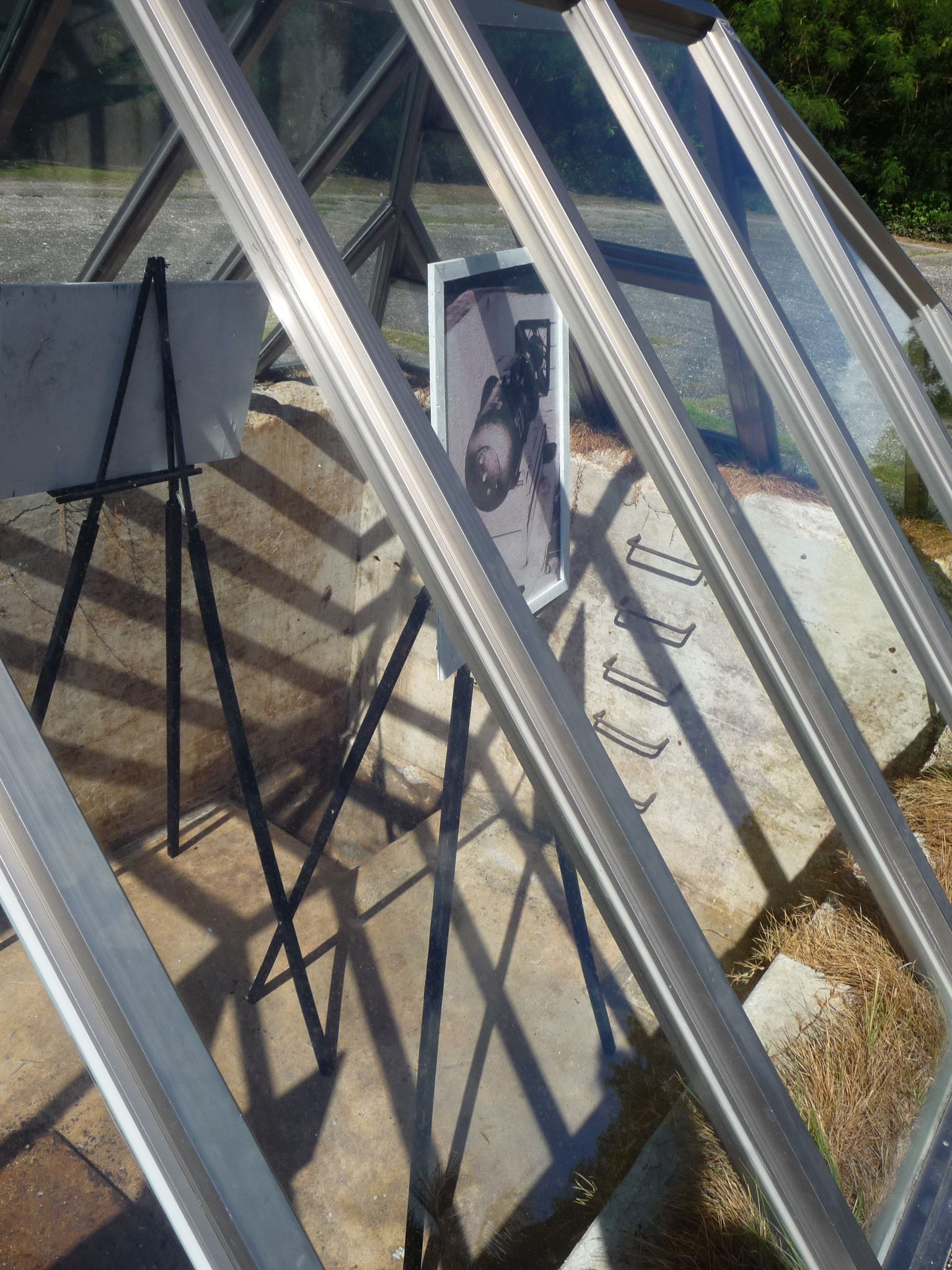
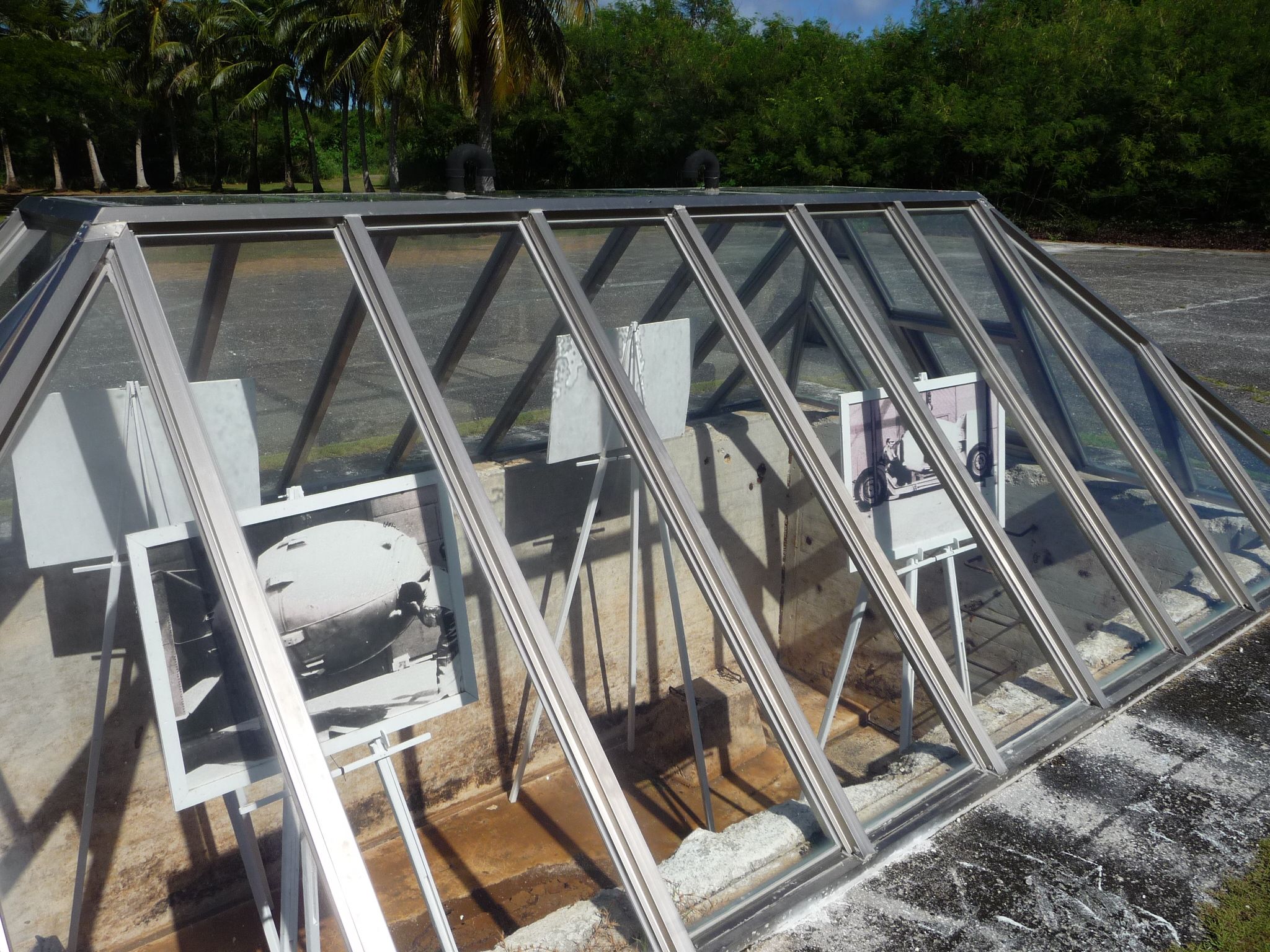
And we were able to actually drive on Runway Able, where the planes took off, heading toward Japan.
